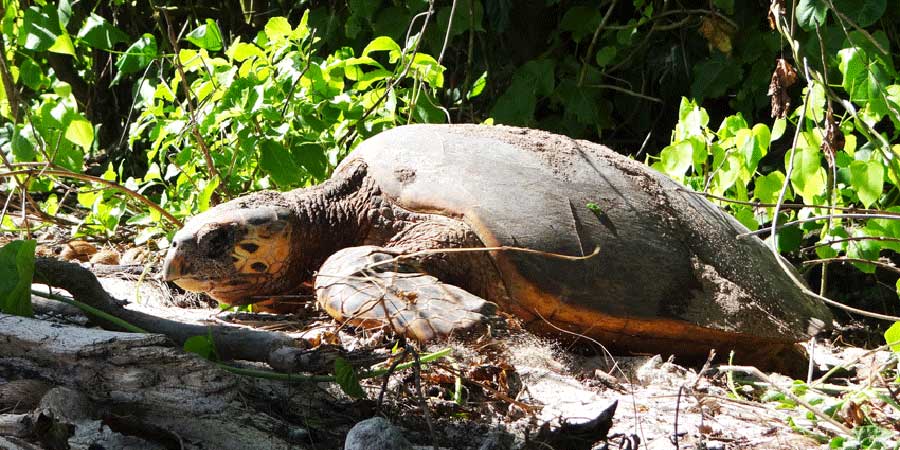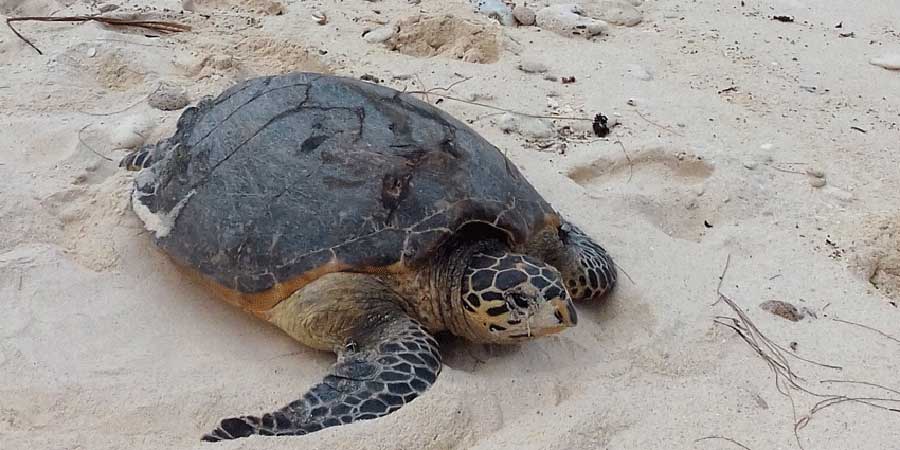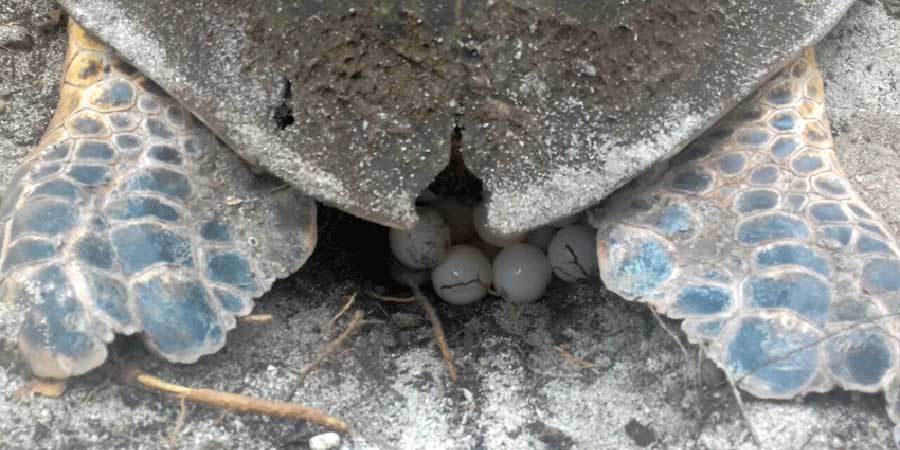
What the turtle are you doing on my beach?
The Critically Endangered Hawksbill turtle is an amazing and beautiful animal that comes to nest on Cousin Island Special Reserve in the Seychelles, one of the most important breeding sites for these turtles in the region.
The main project when volunteering on Cousin Island from September to February is monitoring the nesting turtles. This requires many daily beach patrols to ensure that we encounter as many turtles as possible.
When encountering a turtle on a patrol you need to be able to identify which nesting stage it is in to know when you can start taking data (reading tags, carapace measurements, ID photos, etc) as you can only do this from the laying stage onwards.
When a turtle is laying she goes into a trance like state where data can be taken with the least interference as possible. Encountering these turtles has been an absolute dream come true for me and here are some tips I have for recognizing the different nesting stages.
To me, there are 8 main stages of nesting:
Emergence
When the turtle emerges out of the water. If you see this you are very lucky! Keep your eyes open and watch the sea as you walk.
Approach Crawl
The turtle approaches the beach and makes her way up over the sand/rocks. Always freeze, sit down and wait until you are out of her line of sight.

Body Pitting
When the turtle body pits this means she has found a potential nesting site and will move both sets of flippers to clear the site, moving her body side to side. You will usually notice a buildup of sand on either side of her during this stage
Digging the Nest Hole
With digging you notice the turtle moving side to side as she puts her back flippers one at a time down to dig a scoop of sand and then discards it. Her front flippers usually are not moving.
Laying
Once the nest has been dug the turtle will pause and you will notice her back flippers moving slightly up and down as she lays her eggs. The front flippers are usually not moving, but sometimes she will extend her head out as she lays then back in again.

Covering the Eggs
This stage is when you will see her back flippers moving sand inwards onto the nest, and then she will pat the sand down.
Camouflaging
Now this is a fun one to see as the turtle is moving all flippers at once throwing sand and any other objects (even rocks and logs!) she can find around. She will also move slightly forward as she finishes camouflaging leaving a layer of fluffy sand behind.
Departing
Once she has finished her camouflaging the turtle will make her way back into the water.
Claire Fenney

